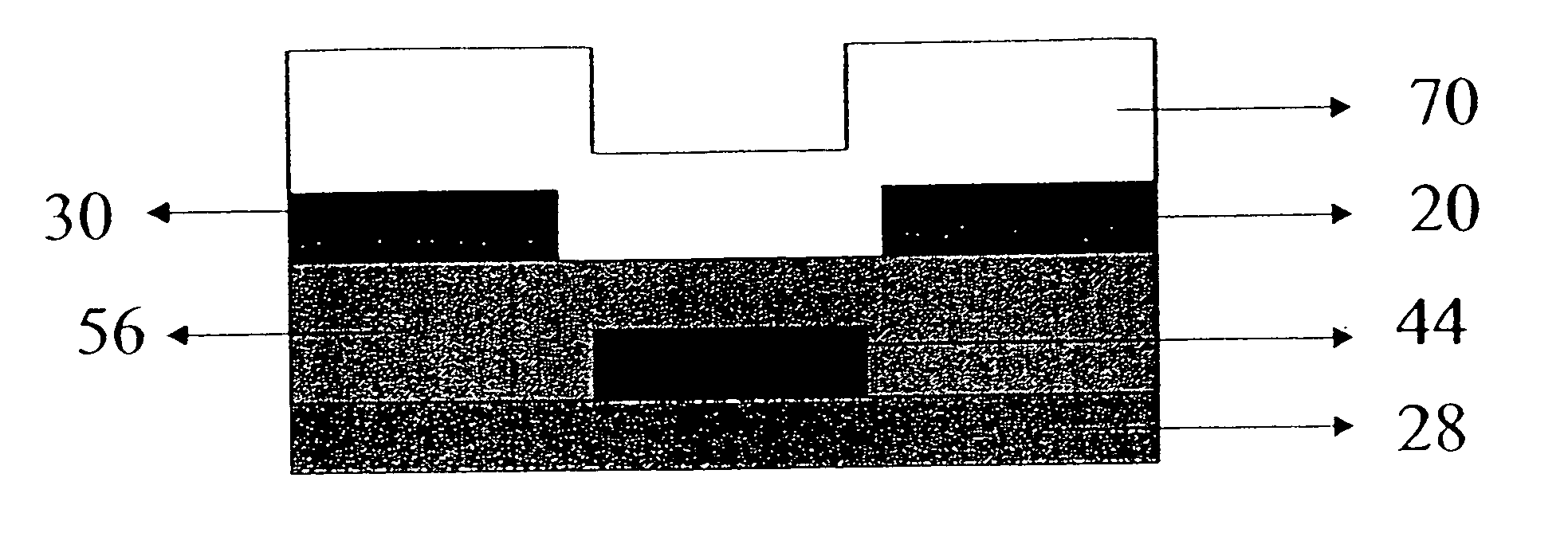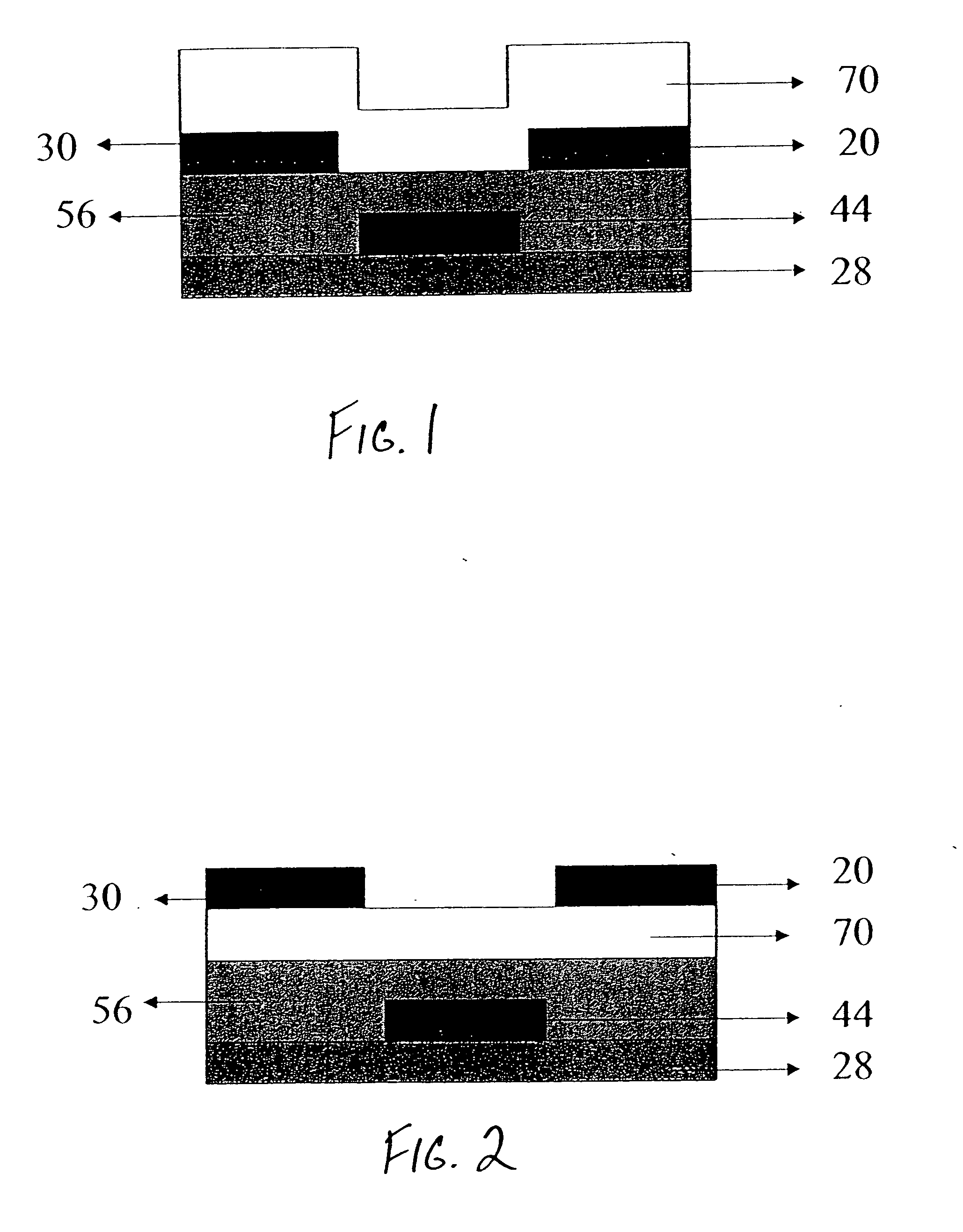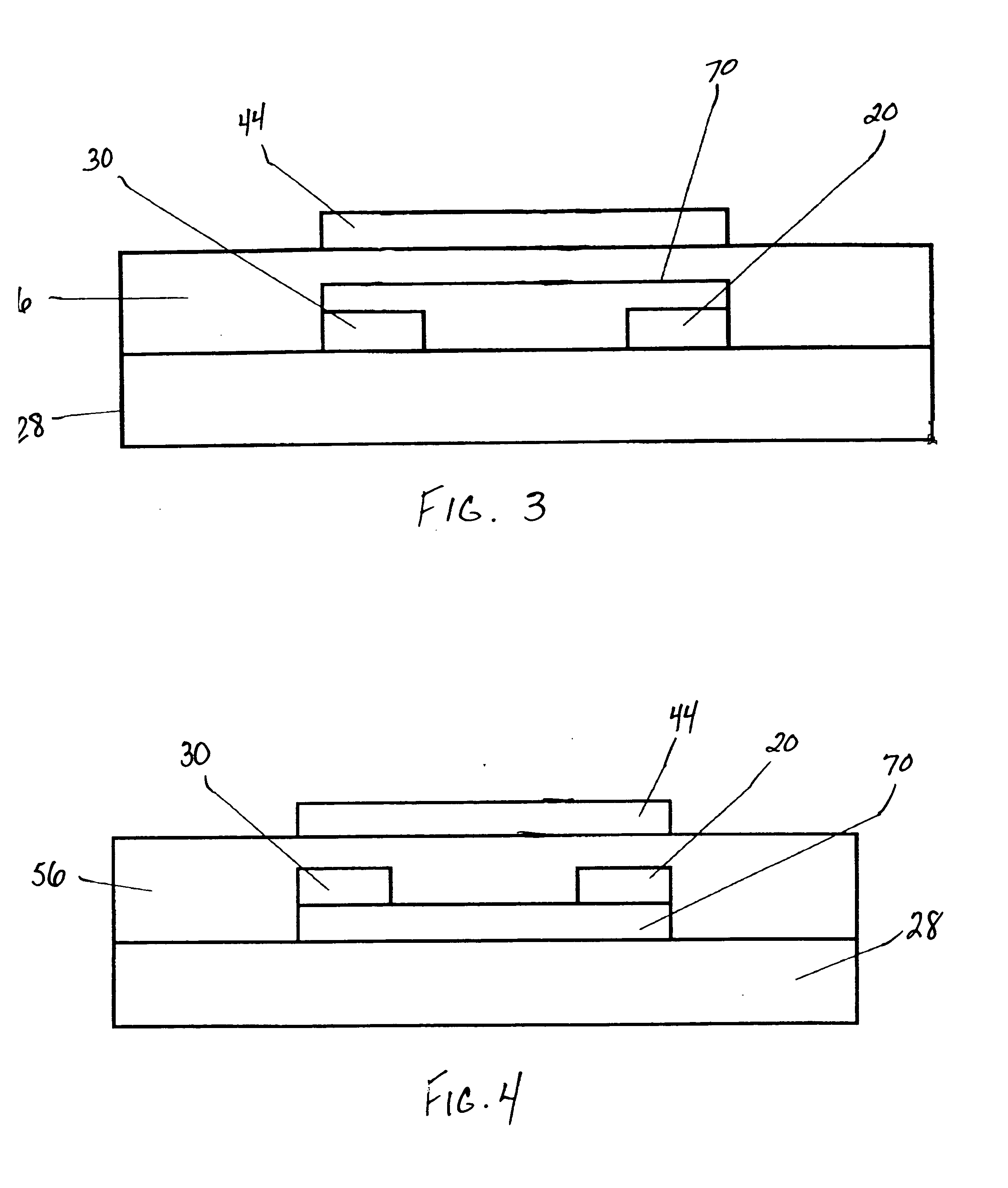Methods of making thin film transistors comprising zinc-oxide-based semiconductor materials and transistors made thereby
a technology of zinc oxide-based semiconductor materials and thin film transistors, which is applied in the direction of semiconductor devices, electrical devices, nanotechnology, etc., can solve the problems of wasting materials, amorphous silicon, and requiring relatively difficult or complicated processes,
- Summary
- Abstract
- Description
- Claims
- Application Information
AI Technical Summary
Benefits of technology
Problems solved by technology
Method used
Image
Examples
example 1
[0126] A coating solution was prepared by diluting the above seed formulation, SLF-1, to 1.3% in ethanol. The above solution was applied to the substrate by spin coating at a rate of 2000 rpm. After the spin coating, the samples were annealed for 10 minutes at 200C in dry air. Following the anneal, a precursor layer consisting of zinc acetate dissolved in methanol with concentrations in Samples 1-1 and 1-2 as listed below was spun on to the substrate at 2000 rpm. The methanol solutions can also contain trace levels of water This layer was then annealed at 200° C. for 10 minutes in dry air. After this process, aluminum contacts were applied by evaporation.
[0127] Following contact evaporation, a passivation layer was applied by spin coating. A 2.5% solution of polystyrene in toluene was applied at a rate of 2500 rpm. Following the spin coating, samples were annealed at 60° C. for 5 minutes in air to remove residual solvent. Devices were then tested for transistor activity as describe...
example 2
[0129] Another coating solution was prepared by diluting the above-described seed formulation, SLF-1, to 1.3% in ethanol. The above solution was applied to the substrate by spin coating at a rate of 2000 rpm. After the spin coating, the samples were annealed for 10 minutes at 200° C. in dry air.
[0130] A first sample (2-1) did not receive any precursor overcoat and subsequent anneal. A second sample, 2-2, had the following treatment. A precursor layer consisting of zinc acetate dissolved in methanol at a concentration of 0.175M was spun on to the substrate at 2000 rpm. This layer was then annealed at 200C for 10 minutes in dry air. After this process, Aluminum contacts were applied to both samples by evaporation.
[0131] Following contact evaporation, a passivation layer was applied by spin coating. A 2.5% solution of polystyrene in toluene was applied at a rate of 2500 rpm. Following the spin coating, samples were annealed at 60C for 5 minutes in air to remove residual solvent. Devi...
example 3
[0133] This example shows that the zinc oxide film can be applied by sequentially inkjet printing the ZnO seed nanoparticles and the precursor. Inkjet printing experiments were performed using a system consisting of a sample platen supported by a set of X-Y translation stages, piezoelectric demand-mode printheads supported by a z translation stage, and software to control these components. The printheads of this inkjet system are suited to dispense droplets in the 20-60 picoliter range. Approximately 2 cc of the fluid to be printed is placed in a sample cartridge that is then screwed to the printing fixture. The printhead is primed with ink using pressurized nitrogen. A TENCOR profilometer was used to measure the printed film thicknesses of a series of calibration samples. The drop volume was calculated as 38 picoliters by using best-fit linear regression in a simple model relating number of drops fired, ink concentration, and printed film thickness.
[0134] The inkjet printed ZnO na...
PUM
 Login to View More
Login to View More Abstract
Description
Claims
Application Information
 Login to View More
Login to View More - R&D
- Intellectual Property
- Life Sciences
- Materials
- Tech Scout
- Unparalleled Data Quality
- Higher Quality Content
- 60% Fewer Hallucinations
Browse by: Latest US Patents, China's latest patents, Technical Efficacy Thesaurus, Application Domain, Technology Topic, Popular Technical Reports.
© 2025 PatSnap. All rights reserved.Legal|Privacy policy|Modern Slavery Act Transparency Statement|Sitemap|About US| Contact US: help@patsnap.com



